Information injection-pump assembly
ZEXEL
106671-4610
1066714610

Rating:
Service parts 106671-4610 INJECTION-PUMP ASSEMBLY:
1.
_
7.
COUPLING PLATE
8.
_
9.
_
10.
NOZZLE AND HOLDER ASSY
11.
Nozzle and Holder
12.
Open Pre:MPa(Kqf/cm2)
13.
NOZZLE-HOLDER
14.
NOZZLE
15.
NOZZLE SET
Include in #1:
106671-4610
as INJECTION-PUMP ASSEMBLY
Cross reference number
ZEXEL
106671-4610
1066714610
Zexel num
Bosch num
Firm num
Name
106671-4610
INJECTION-PUMP ASSEMBLY
Calibration Data:
Adjustment conditions
Test oil
1404 Test oil ISO4113 or {SAEJ967d}
1404 Test oil ISO4113 or {SAEJ967d}
Test oil temperature
degC
40
40
45
Nozzle and nozzle holder
105780-8140
Bosch type code
EF8511/9A
Nozzle
105780-0000
Bosch type code
DN12SD12T
Nozzle holder
105780-2080
Bosch type code
EF8511/9
Opening pressure
MPa
17.2
Opening pressure
kgf/cm2
175
Injection pipe
Outer diameter - inner diameter - length (mm) mm 8-3-600
Outer diameter - inner diameter - length (mm) mm 8-3-600
Overflow valve
132424-0620
Overflow valve opening pressure
kPa
157
123
191
Overflow valve opening pressure
kgf/cm2
1.6
1.25
1.95
Tester oil delivery pressure
kPa
157
157
157
Tester oil delivery pressure
kgf/cm2
1.6
1.6
1.6
Direction of rotation (viewed from drive side)
Right R
Right R
Injection timing adjustment
Direction of rotation (viewed from drive side)
Right R
Right R
Injection order
1-4-2-6-
3-5
Pre-stroke
mm
4.1
4.05
4.15
Beginning of injection position
Drive side NO.1
Drive side NO.1
Difference between angles 1
Cal 1-4 deg. 60 59.5 60.5
Cal 1-4 deg. 60 59.5 60.5
Difference between angles 2
Cyl.1-2 deg. 120 119.5 120.5
Cyl.1-2 deg. 120 119.5 120.5
Difference between angles 3
Cal 1-6 deg. 180 179.5 180.5
Cal 1-6 deg. 180 179.5 180.5
Difference between angles 4
Cal 1-3 deg. 240 239.5 240.5
Cal 1-3 deg. 240 239.5 240.5
Difference between angles 5
Cal 1-5 deg. 300 299.5 300.5
Cal 1-5 deg. 300 299.5 300.5
Injection quantity adjustment
Adjusting point
A
Rack position
12.5
Pump speed
r/min
1175
1175
1175
Each cylinder's injection qty
mm3/st.
209
202.7
215.3
Basic
*
Fixing the lever
*
Boost pressure
kPa
30.7
30.7
Boost pressure
mmHg
230
230
Injection quantity adjustment_02
Adjusting point
B
Rack position
5.5+-0.5
Pump speed
r/min
225
225
225
Each cylinder's injection qty
mm3/st.
10.4
9.4
11.4
Fixing the rack
*
Boost pressure
kPa
0
0
0
Boost pressure
mmHg
0
0
0
Injection quantity adjustment_03
Adjusting point
C
Rack position
13.2+-0.
5
Pump speed
r/min
100
100
100
Average injection quantity
mm3/st.
188
188
218
Fixing the lever
*
Boost pressure
kPa
0
0
0
Boost pressure
mmHg
0
0
0
Remarks
Boost compensatory excess lever at excess.
Boost compensatory excess lever at excess.
Boost compensator adjustment
Pump speed
r/min
500
500
500
Rack position
10.1
Boost pressure
kPa
6.7
4
9.4
Boost pressure
mmHg
50
30
70
Boost compensator adjustment_02
Pump speed
r/min
500
500
500
Rack position
(12.5)
Boost pressure
kPa
17.3
17.3
17.3
Boost pressure
mmHg
130
130
130
Timer adjustment
Pump speed
r/min
-
Advance angle
deg.
0
0
0
Remarks
Measure speed (beginning of operation).
Measure speed (beginning of operation).
Timer adjustment_02
Pump speed
r/min
-
Advance angle
deg.
1
1
1
Remarks
Measure the actual speed, stop
Measure the actual speed, stop
Test data Ex:
Governor adjustment
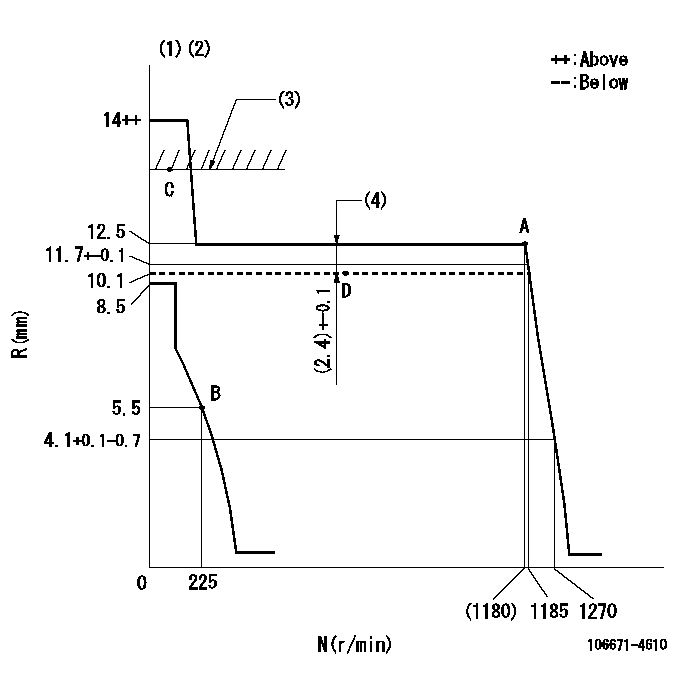
N:Pump speed
R:Rack position (mm)
(1)Target notch: K
(2)Tolerance for racks not indicated: +-0.05mm.
(3)Boost compensator excessive fuel lever at operation: L1 (at 0 boost pressure)
(4)Boost compensator stroke
----------
K=5 L1=(13.2)mm
----------
----------
K=5 L1=(13.2)mm
----------
Speed control lever angle
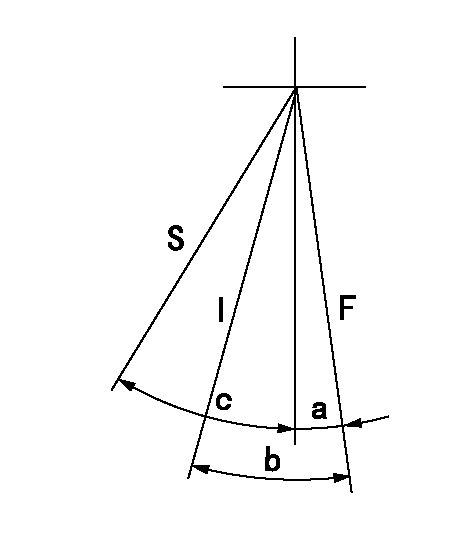
F:Full speed
I:Idle
S:Stop
----------
----------
a=10deg+-5deg b=35deg+-5deg c=32deg+-3deg
----------
----------
a=10deg+-5deg b=35deg+-5deg c=32deg+-3deg
Stop lever angle
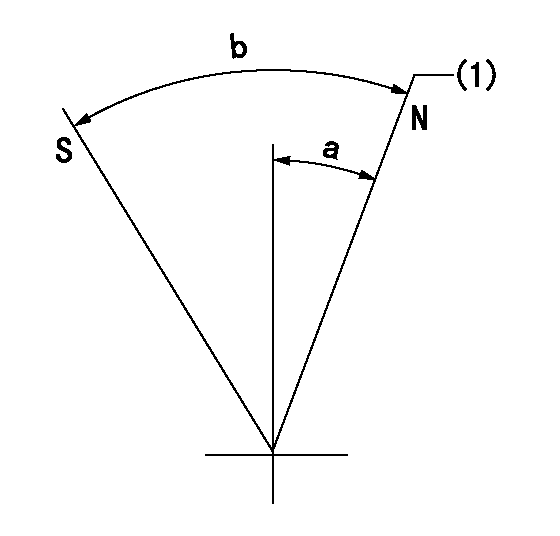
N:Pump normal
S:Stop the pump.
(1)Normal
----------
----------
a=20deg+-5deg b=53deg+-5deg
----------
----------
a=20deg+-5deg b=53deg+-5deg
0000001101
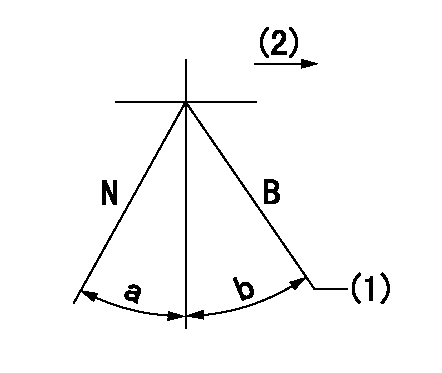
N:Normal
B:When boosted
(1)Rack position = aa at boost pressure 0.
(2)Drive side
----------
aa=(13.2)mm
----------
a=(15deg) b=(15deg)
----------
aa=(13.2)mm
----------
a=(15deg) b=(15deg)
Timing setting
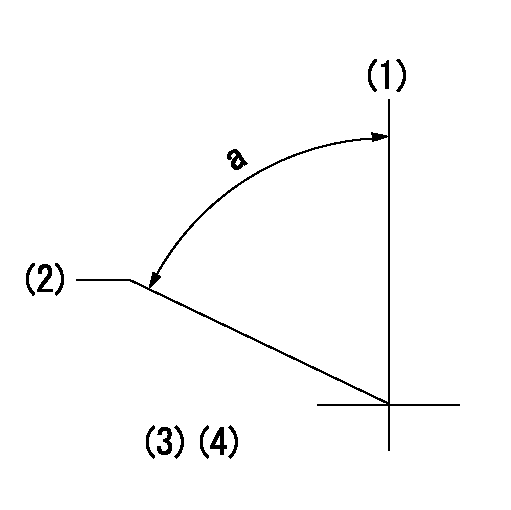
(1)Pump vertical direction
(2)Coupling's key groove position at No 1 cylinder's beginning of injection
(3)-
(4)-
----------
----------
a=(60deg)
----------
----------
a=(60deg)
Information:
Commercial Diesel Engine Oils
The performance of commercial diesel engine oils are based on API categories. These API categories are developed to provide commercial lubricants for a wide variety of diesel engines that operate at various conditions.If Caterpillar DEO (multi-grade) is not used, the following commercial oils are recommended.* API CG-4 Preferred* API CF-4 AllowedAPI CG-4 oils are preferred for Caterpillar engines because of the fuel sulfur level. API CG-4 is the only oil category that evaluates oils with engine tests utilizing 0.05 percent sulfur fuel.The following explanations of these API categories can be used to make the proper choice of a commercial oil. CG-4: This is the newest oil category. CG-4 oils were primarily developed for diesel engines that are operating on 0.05 percent sulfur diesel fuel. All of the laboratory engine tests for this category were run with 0.05 percent sulfur diesel fuel. This category also defines oils that have superior soot discrepancy. CG-4 oils will provide improved viscosity control and improved crankcase cleanliness in applications where oil soot is a problem. CG-4 oils will provide improved viscosity control and improved crankcase cleanliness in applications where oil soot is a problem. CG-4 oils should also be used in engines that contain hydraulically actuated fuel injection pumps; these are the first oils to pass industry tests for foam control and viscosity shear loss. CG-4 oils must also pass recently developed tests for metals corrosion, and wear. CG-4 oils can be used in all Caterpillar engines where CF-4 oils are recommended. CF-4 oils service a wide variety of modern diesel engines. This oil classification was developed with 0.40 percent sulfur diesel fuel. The fuel used in the CF-4 tests represents the type of diesel fuels commonly available world wide. CF-4 oils provide improved piston deposit control and improved oil control when compared to the CE category oils. CF-4 oils also provide improved soot dispersancy compared to CD or CF category oils.Some commercial oils meeting these API specifications may require shortened oil change intervals as determined by close monitoring of oil condition and wear metals (Caterpillar S*O*S Oil Analysis Program preferred).Consult with your Caterpillar dealer for the latest oil recommendations or refer to the following Caterpillar Supplements: SEBU6250, SEBU6251, and SEBU6385.
Failure to follow these oil recommendations can cause shortened engine life due to deposits and or excessive wear.
Total Base Number (TBN) and Fuel Sulfur Levels For Caterpillar Direct Injection (DI) Diesel Engines
The TBN for a new oil is dependent on the sulfur level of the fuel used. For direct injection engines running distillate diesel fuel, the minimum new oil TBN (by ASTM D 2896) must be 10 times the fuel sulfur level, and the minimum TBN is 5 regardless of sulfur level, see the chart below.TBN vs Fuel Sulfur for Caterpillar DI Diesel Engines
Y=oil TBN shown by ASTM D2896. X=percent of fuel sulfur by weight. New oil TBN (1). Change oil when the used oil TBN limit (2) is reached.In areas where the fuel sulfur exceeds 1.5 percent, choose an
The performance of commercial diesel engine oils are based on API categories. These API categories are developed to provide commercial lubricants for a wide variety of diesel engines that operate at various conditions.If Caterpillar DEO (multi-grade) is not used, the following commercial oils are recommended.* API CG-4 Preferred* API CF-4 AllowedAPI CG-4 oils are preferred for Caterpillar engines because of the fuel sulfur level. API CG-4 is the only oil category that evaluates oils with engine tests utilizing 0.05 percent sulfur fuel.The following explanations of these API categories can be used to make the proper choice of a commercial oil. CG-4: This is the newest oil category. CG-4 oils were primarily developed for diesel engines that are operating on 0.05 percent sulfur diesel fuel. All of the laboratory engine tests for this category were run with 0.05 percent sulfur diesel fuel. This category also defines oils that have superior soot discrepancy. CG-4 oils will provide improved viscosity control and improved crankcase cleanliness in applications where oil soot is a problem. CG-4 oils will provide improved viscosity control and improved crankcase cleanliness in applications where oil soot is a problem. CG-4 oils should also be used in engines that contain hydraulically actuated fuel injection pumps; these are the first oils to pass industry tests for foam control and viscosity shear loss. CG-4 oils must also pass recently developed tests for metals corrosion, and wear. CG-4 oils can be used in all Caterpillar engines where CF-4 oils are recommended. CF-4 oils service a wide variety of modern diesel engines. This oil classification was developed with 0.40 percent sulfur diesel fuel. The fuel used in the CF-4 tests represents the type of diesel fuels commonly available world wide. CF-4 oils provide improved piston deposit control and improved oil control when compared to the CE category oils. CF-4 oils also provide improved soot dispersancy compared to CD or CF category oils.Some commercial oils meeting these API specifications may require shortened oil change intervals as determined by close monitoring of oil condition and wear metals (Caterpillar S*O*S Oil Analysis Program preferred).Consult with your Caterpillar dealer for the latest oil recommendations or refer to the following Caterpillar Supplements: SEBU6250, SEBU6251, and SEBU6385.
Failure to follow these oil recommendations can cause shortened engine life due to deposits and or excessive wear.
Total Base Number (TBN) and Fuel Sulfur Levels For Caterpillar Direct Injection (DI) Diesel Engines
The TBN for a new oil is dependent on the sulfur level of the fuel used. For direct injection engines running distillate diesel fuel, the minimum new oil TBN (by ASTM D 2896) must be 10 times the fuel sulfur level, and the minimum TBN is 5 regardless of sulfur level, see the chart below.TBN vs Fuel Sulfur for Caterpillar DI Diesel Engines
Y=oil TBN shown by ASTM D2896. X=percent of fuel sulfur by weight. New oil TBN (1). Change oil when the used oil TBN limit (2) is reached.In areas where the fuel sulfur exceeds 1.5 percent, choose an
Have questions with 106671-4610?
Group cross 106671-4610 ZEXEL
Niigata-Urawa
106671-4610
INJECTION-PUMP ASSEMBLY